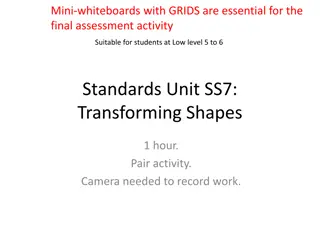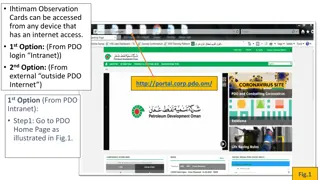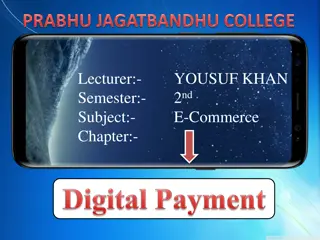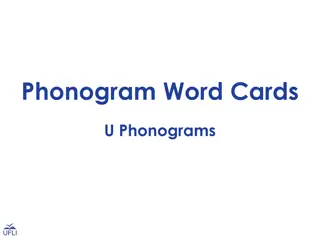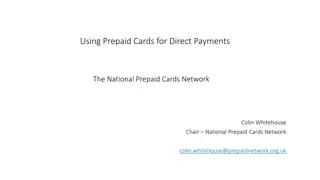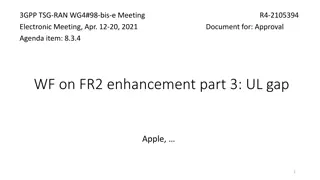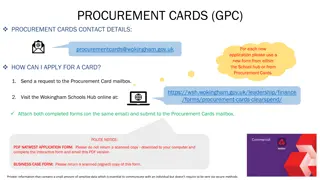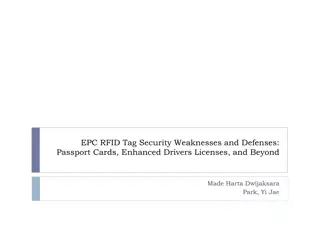
How Proximity Cards Work_ The Technology Behind Them
Discover how proximity cards work, from the technology behind them to their real-world applications. Unlock the secrets of seamless access control!
Download Presentation

Please find below an Image/Link to download the presentation.
The content on the website is provided AS IS for your information and personal use only. It may not be sold, licensed, or shared on other websites without obtaining consent from the author. Download presentation by click this link. If you encounter any issues during the download, it is possible that the publisher has removed the file from their server.
E N D
Presentation Transcript
How Proximity Cards Work: The Technology Behind Them Ever wonder about those little plastic cards we use to get to work or the gym? You know, the ones you just wave in front of a box and - bam! - the door opens like magic? Well, they're called proximity card, and they're pretty cool when you think about it. It wasn't that long ago we were all fumbling with keys or having to swipe cards through readers. Now we just do this little wave-and-go dance, and we're in. It's kinda crazy how something so simple can make life a bit easier, right? But here's the thing - these cards (see the ones by Bristol ID Technologies) aren't actually magic (sorry to burst that bubble). There's some pretty nifty tech going on behind the scenes. What's the Big Deal About Proximity Cards?
The last thing you want to do when youre already late for work is dig around in your purse looking for a key or swipe a card. That's where the proximity card shines. Just wave them near a reader, and voila! Proximity cards, often called prox cards for short, are the unsung heroes of modern access control. They're those nifty little cards that let you into your office, gym, or apartment building without breaking stride. But there's more to them than meets the eye. Read More Articles: Can Tupelo Honey Enhance Your Skincare Routine? RFID Technology At the heart of every proximity card lies a technology called Radio Frequency Identification (RFID). It's like a secret handshake between your card and the reader, but instead of hands, they use invisible radio waves. Cool, right? Here's how it works in a nutshell: 1. The card reader sends out a radio signal. 2. Your proximity card picks up this signal. 3. The card uses the energy from the signal to power up its tiny microchip. 4. The microchip sends back a unique ID number. 5. The reader checks if this ID is allowed access. 6. If it's a match, you're in! All of this happens in the blink of an eye. It's so fast, that you probably don't even notice it happening. Types of Proximity Cards Just like superheroes, proximity cards come in different flavors. The two main types you'll encounter are:
1. Low-Frequency (LF) Cards: These operate at 125 kHz and are the old guard of the proximity card world. They're like the reliable family sedan not flashy, but they get the job done. 2. High-Frequency (HF) Cards: Operating at 13.56 MHz, these are the sports cars of the prox card world. They're faster and can carry more information. Each type has its strengths, and the choice often depends on the specific needs of the system they're used in. HID Prox Cards When it comes to proximity card manufacturers, Bristol ID Technologies is like the Apple of the access control world. Their HID prox card is so popular that some people use "HID" and "proximity card" interchangeably kind of like how some folks say "Kleenex" when they mean tissue. The HID Prox Card II is their flagship model, known for its durability and reliability. It's like the Swiss Army knife of proximity cards versatile and trusted by businesses worldwide. Passive vs. Active Cards Most cards, including proxy cards, are passive. This means they don't have a battery. Instead, they're like vampires (the non-sparkly kind) they come to life when exposed to the reader's electromagnetic field. On the flip side, active cards have their own power source. They're less common but can transmit over longer distances. Think of them as the marathon runners of the prox card world. Security: More Than Just a Plastic Card Now, you might be thinking, "Can't someone just copy my card?" Well, proximity card manufacturers are always one step ahead. Modern HID access control cards come with encryption that would make James Bond jealous.
Here's a quick look at some security features: Feature Description Encryption Scrambles data to prevent eavesdropping Unique Identifiers Each card has a one-of-a-kind ID Anti-cloning Makes it super hard to duplicate cards Read More Articles: Golden Energy: The Benefits of Adding Honey to Your Daily Coffee Other Uses for Proximity Cards While access control is their bread and butter, HID proximity cards are branching out. They're like the Swiss Army knives of the ID world. Here are some cool ways they're being used: Cashless payments: Buy your lunch with a wave of your card. Time and attendance: Clock in and out without punching a timecard. Public transport: Hop on the bus or train with a tap. Loyalty programs: Collect points without carrying a bunch of cards. Choosing the Right Proximity Card If you're in the market for proximity cards, here are some tips: 1. Know your frequency: Make sure it matches your existing system. 2. Consider durability: Will it survive being sat on in your back pocket? 3. Think about additional features: Do you need it to double as a photo ID? 4. Check compatibility: Not all cards work with all readers. The Invisible Tech That Makes Life Easier
So there you have it the lowdown on proximity cards. From the HID prox card to the latest in RFID technology, these little plastic wonders are making our lives easier and more secure, one wave at a time. So, order your personal key to a more connected, secure, and convenient future from the best in the game - Bristol ID Technologies. Site Article: How Proximity Cards Work: The Technology Behind Them









